Passport Errors and How to Avoid Them
Passports—the most important item for international travel, yet also one of the hardest things to receive. The application process for a passport has a small margin for error to be successful, yet the possibilities of something going wrong are limitless. Every mistake can delay the process and threaten your global travel plans. Fortunately, CIBT has helped thousands of travelers just like you through the passport process. We’ve compiled the mistakes we see most often and put together six of our best tips to avoid some common passport errors.
1. Not Checking If You Need A Passport First
While most countries require a valid passport to enter their nation, this is not true for every destination. However, even if your desired destination does not require a passport, your home nation will likely require one for you to re-enter the country. Double-check the passport requirements for your travel destination.
2. Applying Too Close To Your Departure Date
It’s always best to give yourself as much time as possible for the passport process. We recommend you start the application at least three months in advance of your planned departure date. Due to COVID-19 delays, even a flawless passport application can take longer than usual.
If you’re renewing a passport, however, you should start the renewal process eight to eleven months ahead of your trip. Most countries, including the United States, will not allow you to enter if your passport expires in less than six months. There are ways to expedite your passport process, but the more time you can give yourself, the less stressed you will be.
Is your trip within the next three months? Enlist CIBT to help expedite the process and see what we can do for you.
3. Missing Proper Documents for the Application
If you are applying for a passport, you’ll need to send proof of citizenship and official passport photos. Birth certificates and driver's licenses are the easiest to use, but whatever document you send, it must be the original or a certified copy. Don’t try to use a hospital certificate or a photocopy!
Make sure your proof of citizenship has a registrar’s raised seal, signature, and the official date the certificate or license was filed. Certificates need an authentication date within one year of your birth, and licenses must be at least six months old.
Passport photos can’t just be selfies taken on a phone or even from a professional photographer—your best option is to go to a photographer who specializes in passport photos. Walgreens, CVS, AAA, and other organizations will charge a small fee for official photos. They know the exact measurements needed for the photo and how to frame your face in them. Photos also need to be from within the six months of the start of your application fee. The closer you can get them to when you send in your application, the better.
You will also need to send the fee to pay for the passport process. Despite our increasing digital age, since you will be mailing in your application, you will need to pay via a check or a postal money order. Unfortunately, you can’t simply send cash. It may be possible to pay electronically if you go directly to the passport agency, but that isn’t an option for everyone. If you are applying by mail, it is best to also send a check or money order.
4. Not Filling Out the Form Correctly
One of the most common mistakes made in applications are passport typos. It’s tempting to rush through the documentation and finish it as quickly as possible, but you don’t want to risk making any errors on this application. The documentation requires a pen, not pencil, and any signs of white-out, cross-outs, or erasing on your application could make it difficult for the authorities to correctly enter your information on your passport. If there are any errors on your passport, international authorities will likely bar you from entering your destination country.
It’s best to do the application when you have plenty of time and a clear mind. Make sure you have all your documents with you so you’re not getting up and risking losing your place in the process. With everything next to you, you can easily transfer the information to the application. If you are filling out the application on behalf of someone else, make sure they’re present with you too.
5. Not Double Checking Everything
Even if you follow everything to the letter, it’s possible a passport typo slipped through. Once you finish, put all your documents together in a safe place and look at them again later with fresh eyes. Have a trusted friend double-check the information for you too—they may catch something you didn’t.
6. Not Asking CIBTvisas for Help
CIBT has the experienced industry knowledge you need to help you avoid passport errors or feeling overwhelmed by the process. As the leading global provider of immigration and visa services for corporations and individuals, you’ll get professional assistance from attorneys and qualified migration consultants. No matter where you want to travel with your new passport, we’re located in over 70 offices in 25 countries, so we can help from anywhere. Get in touch with our team today!
Stay Up To Date
Stay up to date on the latest travel news from the experts at CIBTvisas.
